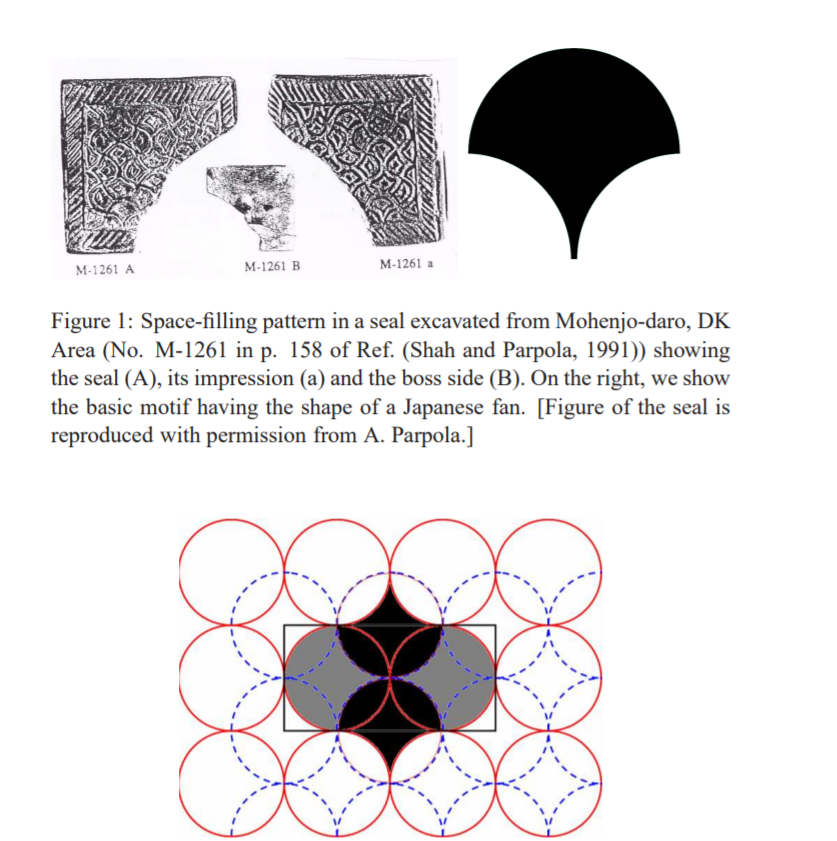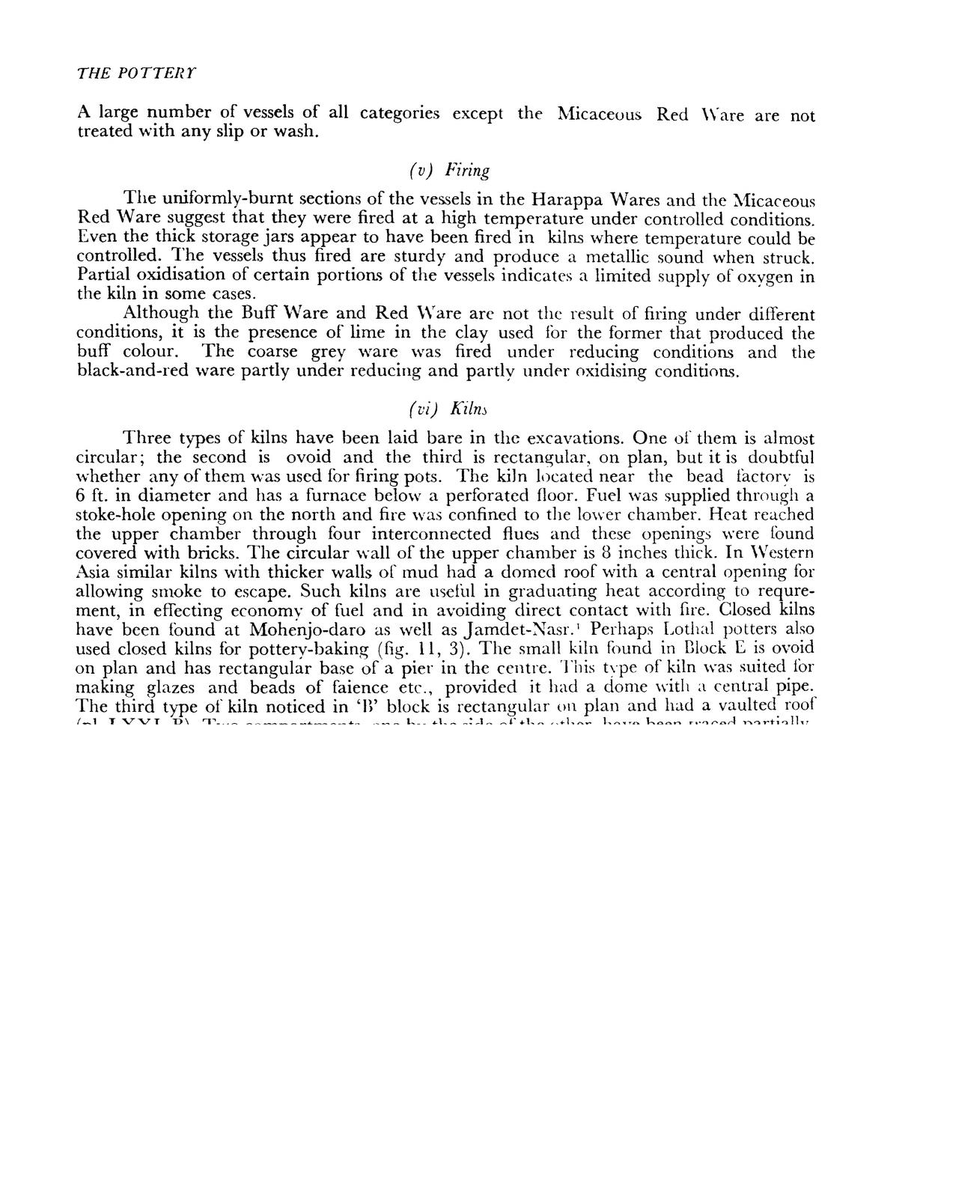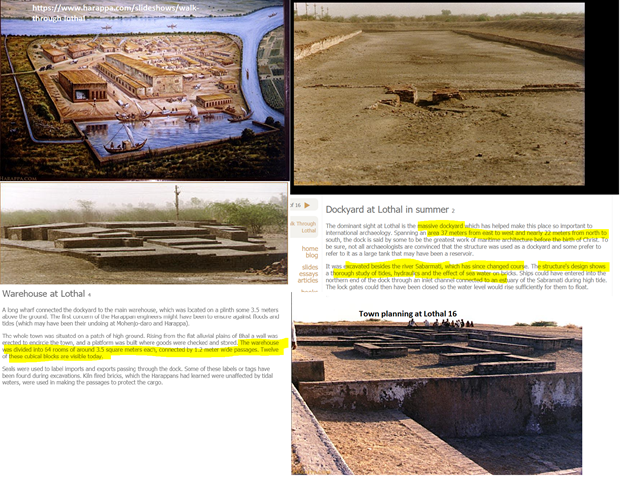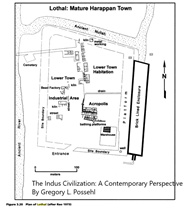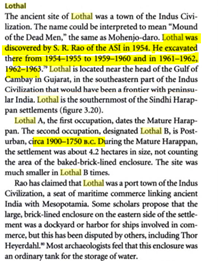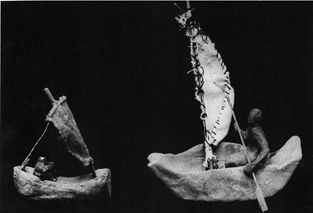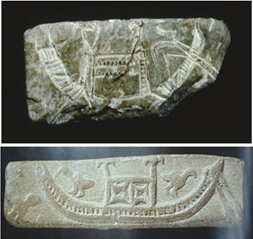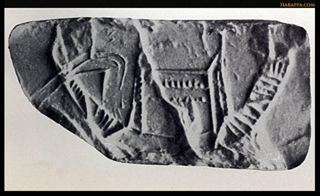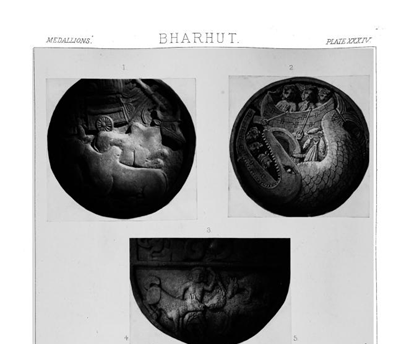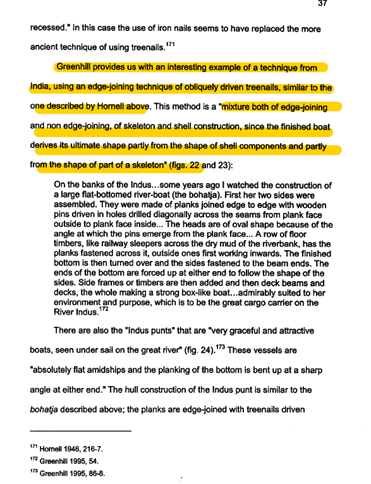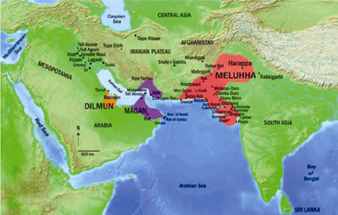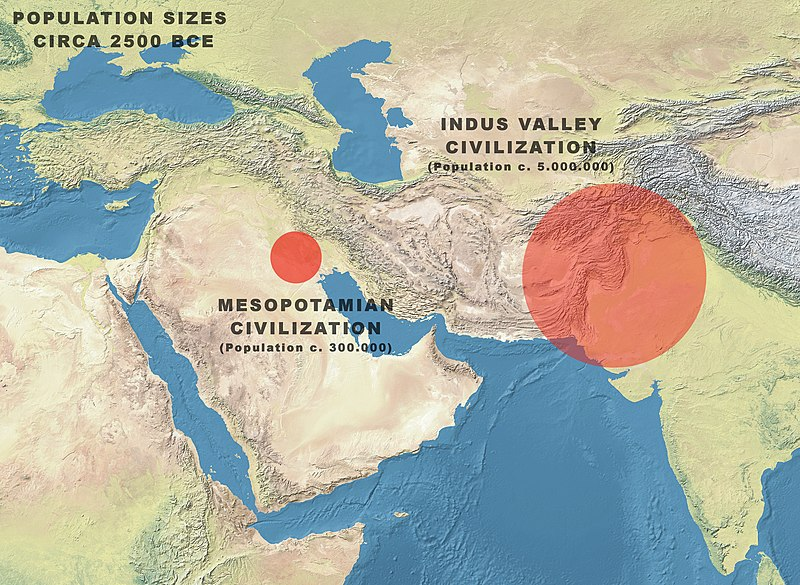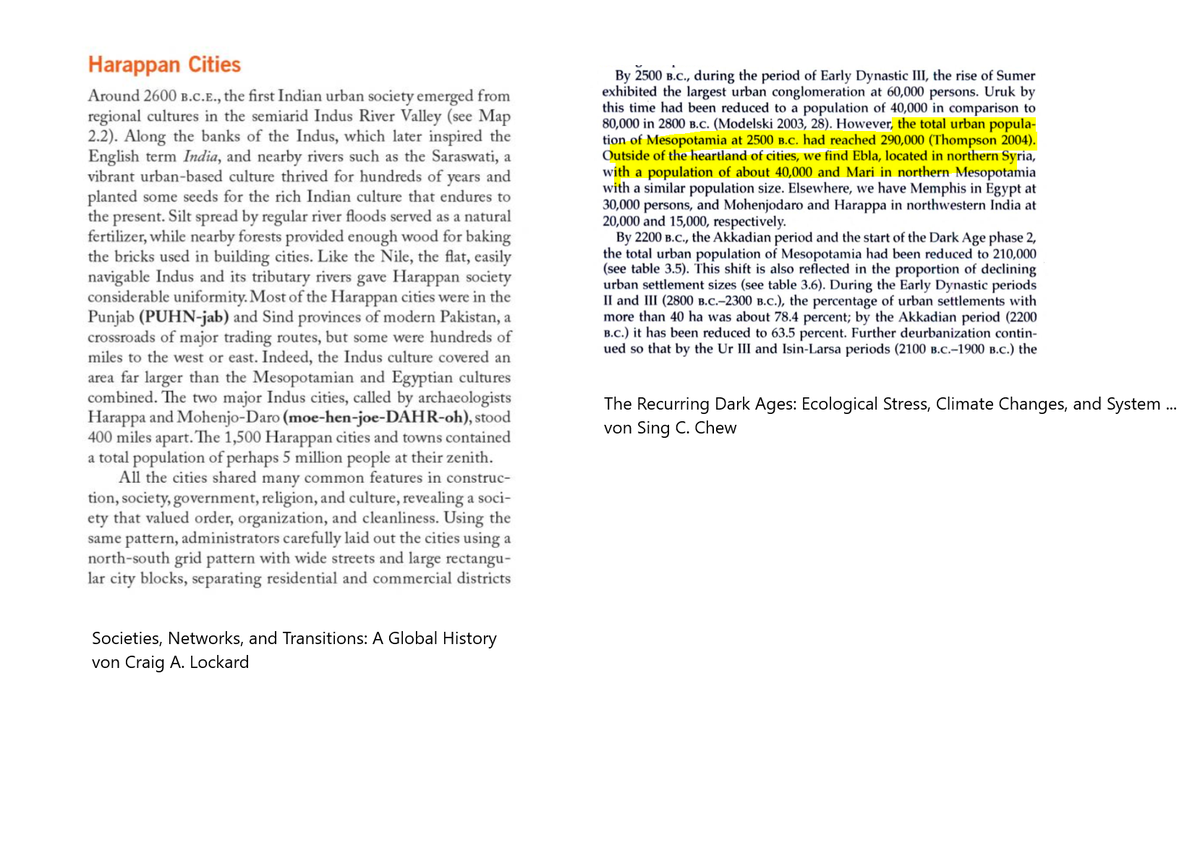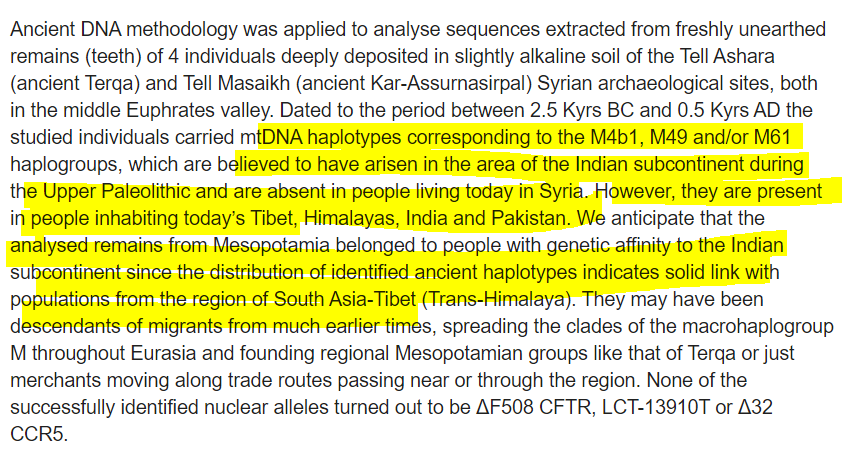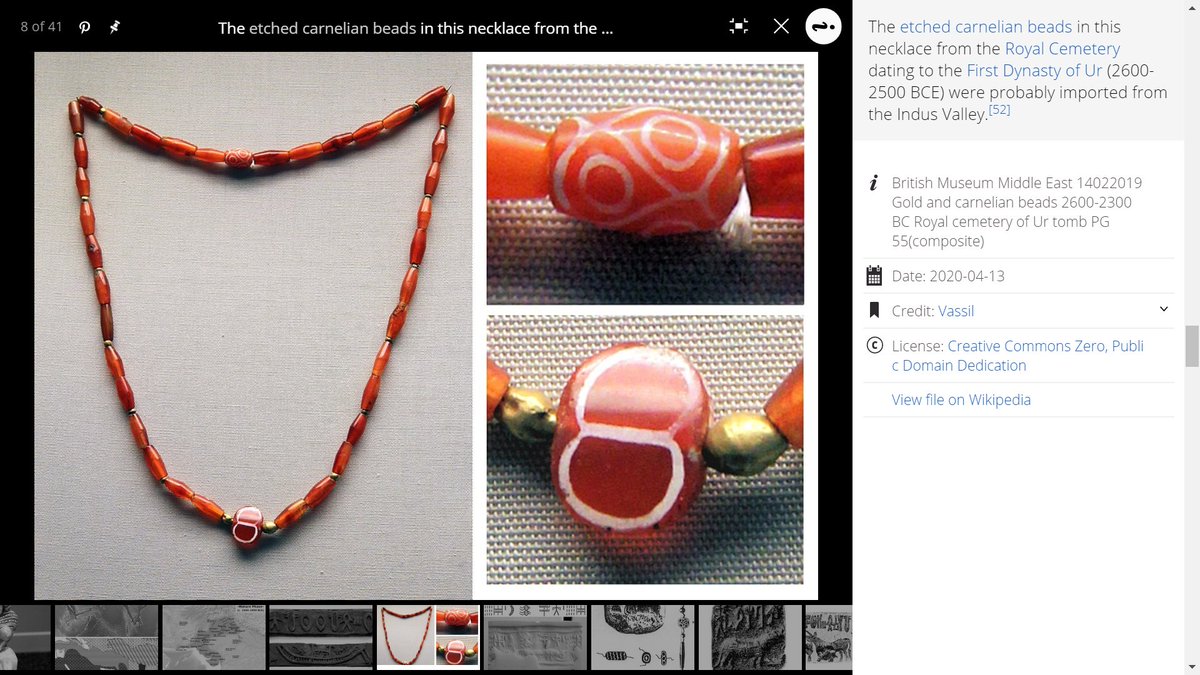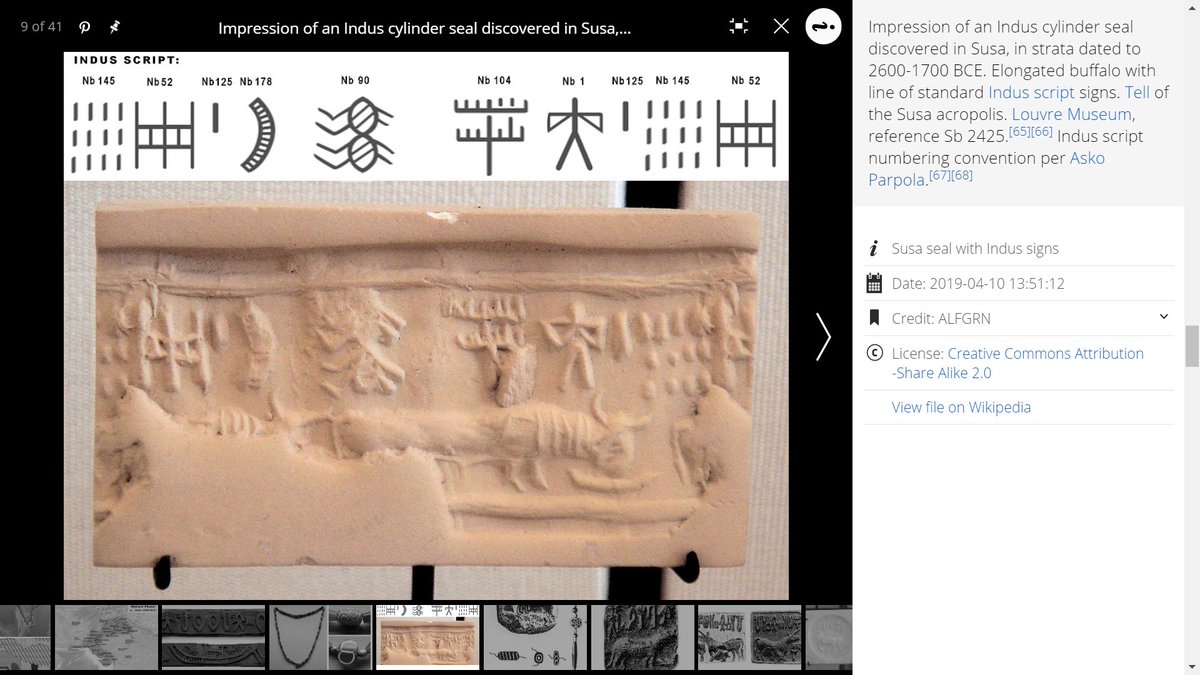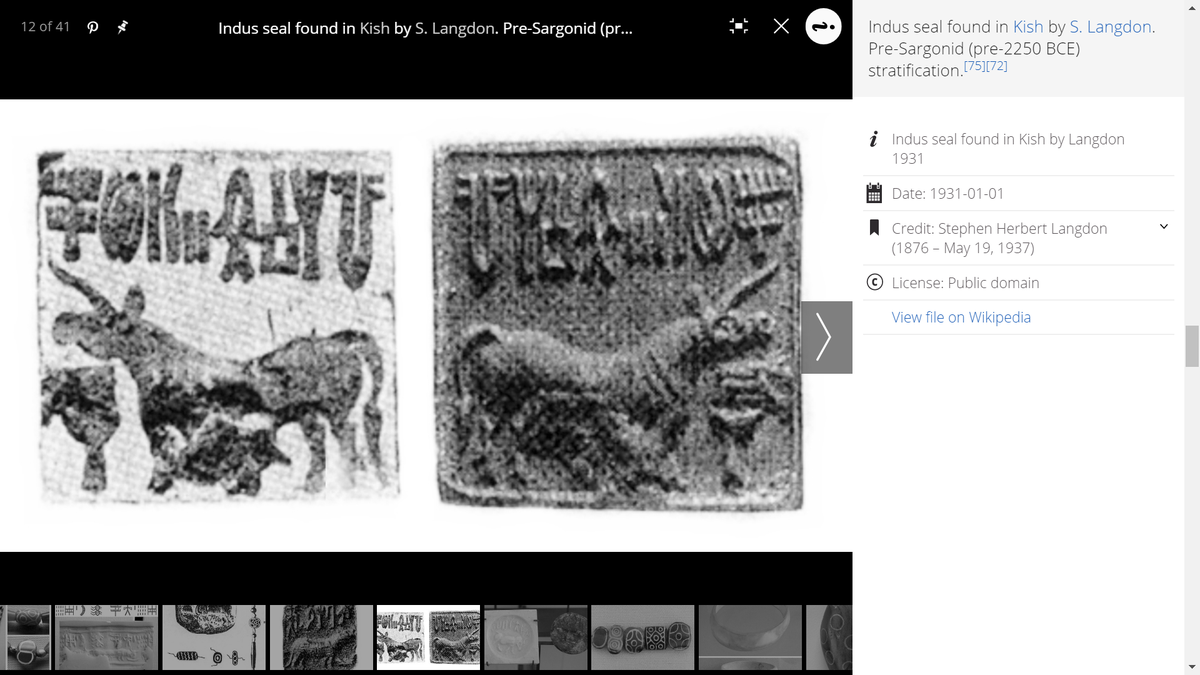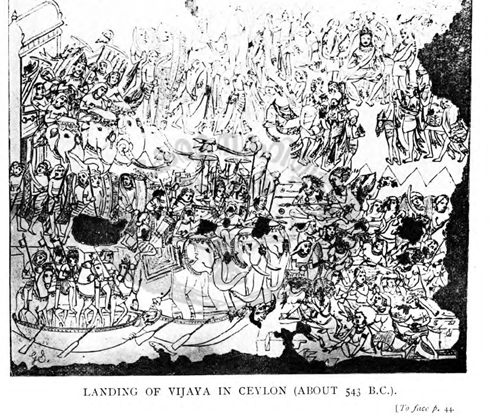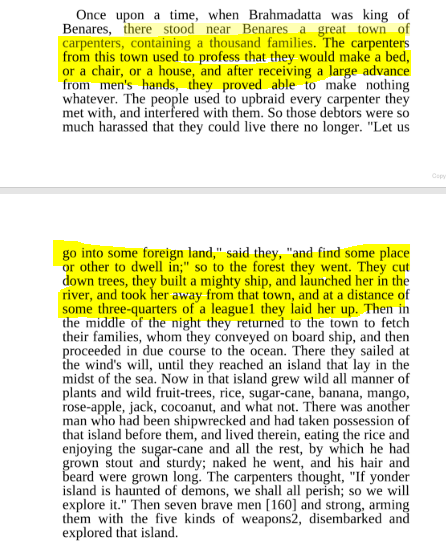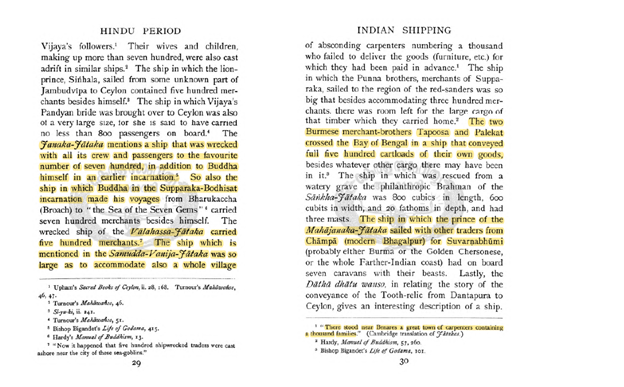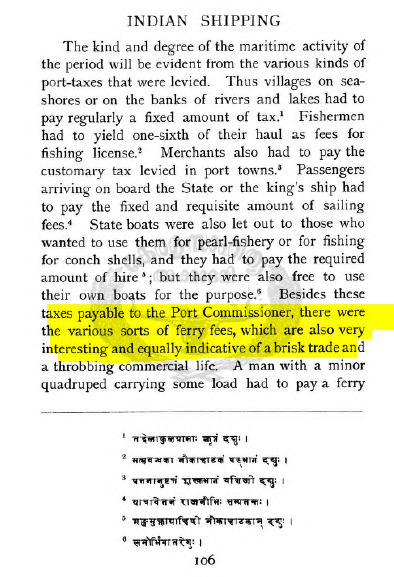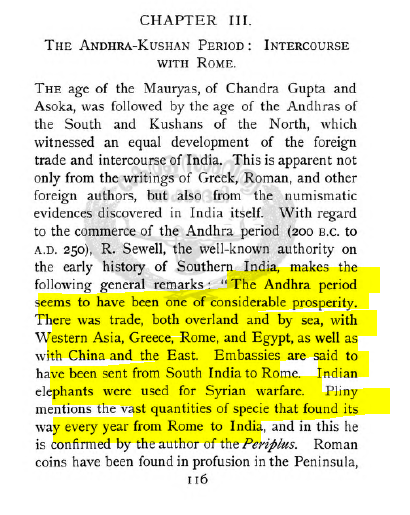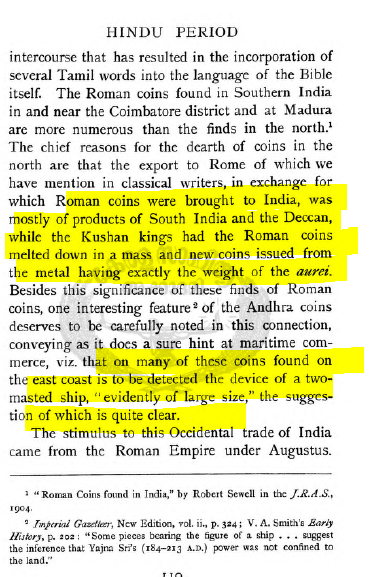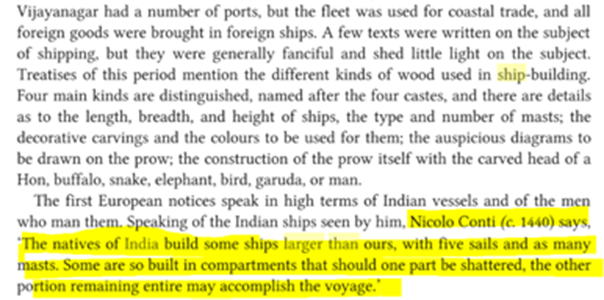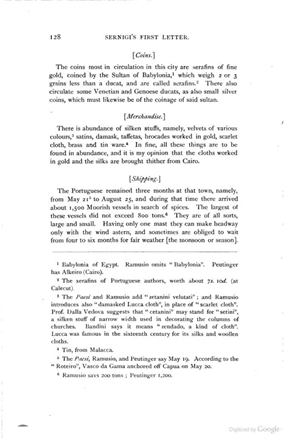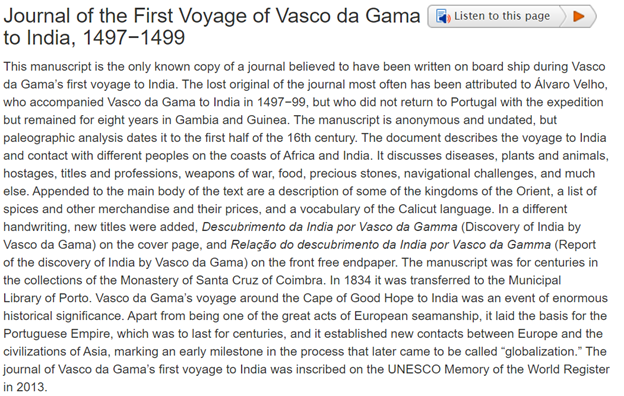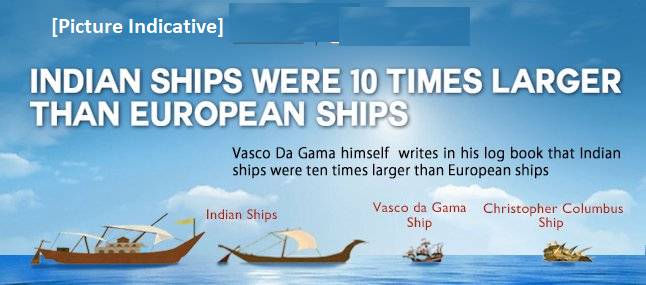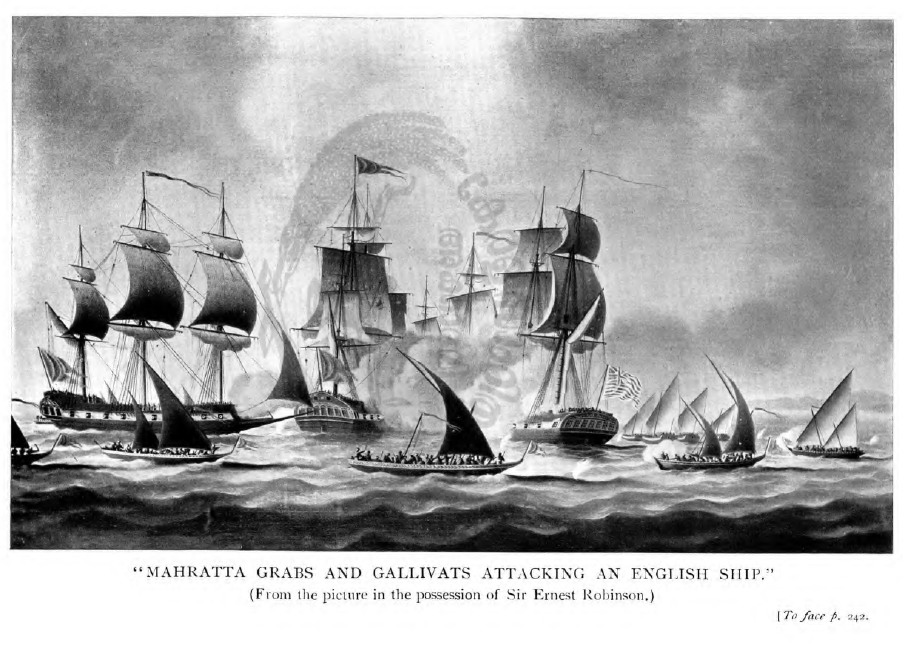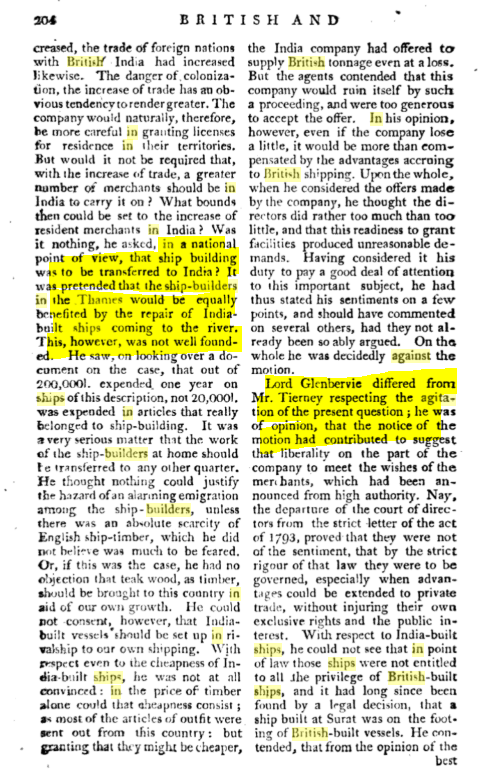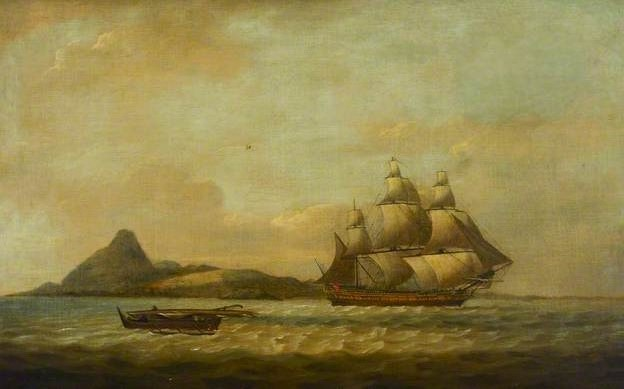THREAD
INDIA was very advanced in MARITIME since antiquity. Latest Sigillography, Carbon-Dating findings are enough to force revision of our text books.
India dominated International TRADE around 3000 BC. #Lothal excavation was the missing link.
Please read on
1/n
INDIA was very advanced in MARITIME since antiquity. Latest Sigillography, Carbon-Dating findings are enough to force revision of our text books.
India dominated International TRADE around 3000 BC. #Lothal excavation was the missing link.
Please read on
1/n
The very word Navigation is derived from the Sanskrit ‘Navgatih’ नवगतिः (नव+गति:)
There are mentions of marine activities in #Mahabharata & #Ramayana
Sanskrit words नाव बंधन कीलः (Anchor) वाता वस्त्रः, सतूला भागः (Hull), केनी पातः, कूपदण्डः, नवातालः,वृत्तासंघभागः few ex.
2/n
There are mentions of marine activities in #Mahabharata & #Ramayana
Sanskrit words नाव बंधन कीलः (Anchor) वाता वस्त्रः, सतूला भागः (Hull), केनी पातः, कूपदण्डः, नवातालः,वृत्तासंघभागः few ex.
2/n
There are humongous evidences from #lothal & other #mohanjodero excavations proving that Indians maintained their maritime activity throughout the ancient and mediaeval periods
3/n
3/n
Geometrical knowledge existed ~3000 BC much before Sulbasutras of ~1000 BCE (see patterns)
A #COMPASS was found at #Lothal used for Navigation system 5000 years ago.
A bead factory was also discovered at #Lothal
4/n
https://archive.org/details/in.ernet.dli.2015.532560/page/n19/mode/2up?q=3792
https://www.tifr.res.in/~archaeo/papers/Harappan%20Civilisation/Mathematics%20of%20Harappans.pdf
A #COMPASS was found at #Lothal used for Navigation system 5000 years ago.
A bead factory was also discovered at #Lothal
4/n
https://archive.org/details/in.ernet.dli.2015.532560/page/n19/mode/2up?q=3792
https://www.tifr.res.in/~archaeo/papers/Harappan%20Civilisation/Mathematics%20of%20Harappans.pdf
#Lothal was well planned dock (discovered in 1954) and one of the ancient sites of Harappan culture, It was well ahead of its time. It was a linking maritime commerce route to Mesopotamia around 2k-3kBC.
https://www.britannica.com/place/India/Harappa#ref485025
https://web.archive.org/web/20200624122417/https://whc.unesco.org/en/tentativelists/5918/
5/n
https://www.britannica.com/place/India/Harappa#ref485025
https://web.archive.org/web/20200624122417/https://whc.unesco.org/en/tentativelists/5918/
5/n
Please see seals and terracotta objects from Mohanjodero and Lothal. The unique designs, Masts were mastery of Indian Ship manufacturers.
https://www.researchgate.net/figure/Clay-model-boats-have-been-found-from-Lothal-excavations-Figure-1-Figure-showing-the_fig4_321418755
6/n
https://www.researchgate.net/figure/Clay-model-boats-have-been-found-from-Lothal-excavations-Figure-1-Figure-showing-the_fig4_321418755
6/n
Critical Ship building technique is use of KEEL (to stabilize) ships.
This technique was missing in earlier Ships from messopotamia this came from Indus civilization. https://www.britannica.com/technology/keel-ship-part
7/n
This technique was missing in earlier Ships from messopotamia this came from Indus civilization. https://www.britannica.com/technology/keel-ship-part
7/n
Another Critical ship making technique unique to Indus was 'Edge Joining'
Indian ships were famous for no iron joints. (i.e. no iron nail in the ship). They used a natural property of Wood expansion when soaked. What they call is 'Mortise and Tenon Joinery'
@desertfox61I
8/n
Indian ships were famous for no iron joints. (i.e. no iron nail in the ship). They used a natural property of Wood expansion when soaked. What they call is 'Mortise and Tenon Joinery'
@desertfox61I
8/n
Medallion from Bharhut, depicts 3 man on ship in the sea, where external portion of ship is swallowed by giant fish and internal portion remains intact
This proves Indus built ships in decks in such a way that if one part gets damaged Ship would continue to work
@Nupur_Ahire
9/n
This proves Indus built ships in decks in such a way that if one part gets damaged Ship would continue to work
@Nupur_Ahire
9/n
According to a study by the @CSIRNIOGoa, Indians had knowledge of harnessing monsoon winds for navigation long before Hippalus, the Greek mariner and acclaimed discoverer of monsoon winds
https://economictimes.indiatimes.com/news/science/navigation-began-in-india-indus-valley-indians-used-monsoon-winds-for-sailing/articleshow/61912277.cms?from=mdr
@LevinaNeythiri
Hang on take a break. more to come
10/n
https://economictimes.indiatimes.com/news/science/navigation-began-in-india-indus-valley-indians-used-monsoon-winds-for-sailing/articleshow/61912277.cms?from=mdr
@LevinaNeythiri
Hang on take a break. more to come
10/n
Indus (Meluha), Masan (portions of Oman, UAE, Iran), Dilmun (portions of Dammam, Bahrain, Qatar) were trading partners with Messopotamia.
At its zenith, Indus were 5 Million 20x of messopotamia were 0.3 Million.
Imagine GDP of India at that time.
@Aabhas24
@harshasherni
11/n
At its zenith, Indus were 5 Million 20x of messopotamia were 0.3 Million.
Imagine GDP of India at that time.
@Aabhas24
@harshasherni
11/n
Recent DNA study of samples taken from 2500 BC indicates that the mtDNA which arise in Indian subcontinent is still present in inhabitants of today's while it is extinct in habitants of Mesopotamia.
Indication of 'Aryan Outward Migration'.
https://journals.plos.org/plosone/article?id=10.1371/journal.pone.0073682
@PhasistB
12/n
Indication of 'Aryan Outward Migration'.
https://journals.plos.org/plosone/article?id=10.1371/journal.pone.0073682
@PhasistB
12/n
Evidences of Influence of Indus Civilisation on Mesopotamia evident from latter's seal.
Seal 1: feeding water to buffalo(not naturally found in Mes)
Seal 2: Akkadian cylinder seal with inscription: "Shu-ilishu, interpreter of the language of Meluhha"
https://www.louvre.fr/en/oeuvre-notices/cylinder-seal-ibni-sharrum
13/n
Seal 1: feeding water to buffalo(not naturally found in Mes)
Seal 2: Akkadian cylinder seal with inscription: "Shu-ilishu, interpreter of the language of Meluhha"
https://www.louvre.fr/en/oeuvre-notices/cylinder-seal-ibni-sharrum
13/n
Kenoyar has reason to believe that Indus were living in UR working as agent or running local shops to handle large volume of business.
Textual evidences suggest that 4272 Meluha women worked as weavers in Guabba village.
15/n
Textual evidences suggest that 4272 Meluha women worked as weavers in Guabba village.
15/n
543 BC, Prince Vijaya with 700 followers sailed to Ceylon and became King later.
Mentions of Big ships in Jataka volume IV.
Alexandar army returned on ~1000 ships which were made in Sind.
(citing few for paucity of space)
@VertigoWarrior @SortedEagle
https://www.britannica.com/place/Sri-Lanka/History#ref388477
16/n
Mentions of Big ships in Jataka volume IV.
Alexandar army returned on ~1000 ships which were made in Sind.
(citing few for paucity of space)
@VertigoWarrior @SortedEagle
https://www.britannica.com/place/Sri-Lanka/History#ref388477
16/n
321-297 BC, Chandragupt Maurya created NAVAL Department and defined duty structure for import and exports.
17/n
17/n
200 BC-250 AD: Andhra Period: Trade with western asia, Rome, Egypt, China was prospering. Roman coins were discovered in Southern India. Indicating trade directions.
18/n
18/n
Aryabhta and Varahamihir, having mapped the positions of celestial bodies, developed a method of computing a ship's position
A magnetic compass was being used around the 4-5th century AD (Matsya Yantra), with iron fish that floated in a vessel of oil
https://www.indiannavy.nic.in/content/early-history
19/n
A magnetic compass was being used around the 4-5th century AD (Matsya Yantra), with iron fish that floated in a vessel of oil
https://www.indiannavy.nic.in/content/early-history
19/n
Between 5-10th centuries AD, the Vijaynagaram and Kalinga were ruling over Malaya, Sumatra and Western Java.
The daily revenue eastern regions in 844-848 AD was estimated at 800 KG gold.
20/n
The daily revenue eastern regions in 844-848 AD was estimated at 800 KG gold.
20/n
In 1292 AD, Marco Polo described Indian ships as " ...built of fir timber, having a sheath of boards laid over the planking in every part, caulked with oakum and fastened with iron nails.
21/n
21/n
From Journals of Voyage of Vasco Da Gama,
Manuscripts https://www.wdl.org/en/item/10068/ which mentions that Indian ships were as large as 800 Tonnes. (Note Vasco's Ship was 100 Tonnes)
https://www.wdl.org/en/item/10068/ which mentions that Indian ships were as large as 800 Tonnes. (Note Vasco's Ship was 100 Tonnes)
Having gone through the glory I can confidently agree to @Bharathgyan
https://twitter.com/Bharathgyan/status/1068836740540989440?s=20
22/n
Manuscripts
 https://www.wdl.org/en/item/10068/ which mentions that Indian ships were as large as 800 Tonnes. (Note Vasco's Ship was 100 Tonnes)
https://www.wdl.org/en/item/10068/ which mentions that Indian ships were as large as 800 Tonnes. (Note Vasco's Ship was 100 Tonnes)Having gone through the glory I can confidently agree to @Bharathgyan
https://twitter.com/Bharathgyan/status/1068836740540989440?s=20
22/n
During 17th century, Shivaji owned formiddable naval fleet. Shivaji developed several docks.
in 1698, Conajee Angria took over the command of Maratha fleet and never look back untill his death 1729. Thereafter Shambooji and Toolaji carried over the glory till ~1755
22/n
in 1698, Conajee Angria took over the command of Maratha fleet and never look back untill his death 1729. Thereafter Shambooji and Toolaji carried over the glory till ~1755
22/n
1529 marks decline of Indian maritime power with the arrival of Portugese
Portugese imposed a system of licence for trade
The harbour finally ceded it to the British in 1662, under a marriage treaty b/w Charles II and Catherine of Braganza
https://www.indiannavy.nic.in/content/early-history
23/n
@fayedsouza
Portugese imposed a system of licence for trade
The harbour finally ceded it to the British in 1662, under a marriage treaty b/w Charles II and Catherine of Braganza
https://www.indiannavy.nic.in/content/early-history
23/n
@fayedsouza
Despite western domination, Indian shipbuilders continued to produce Ships displacing 800 to 1000 tons superior to their British.
Agitated British shipbuilders on the River Thames protested against the use of Indian-built ships.
https://www.indiannavy.nic.in/content/early-history
24/n
Agitated British shipbuilders on the River Thames protested against the use of Indian-built ships.
https://www.indiannavy.nic.in/content/early-history
24/n
Consequently active measures were taken to cripple the Indian industry. Nevertheless, many Indian ships were inducted into the Royal Navy, such as HMS Hindostan-1795, the frigate Cornwallis-1800, HMS Camel-1806 & HMS Ceylon (1808).
A LEADER was decimated by colonisers.
25/25
EOT
A LEADER was decimated by colonisers.
25/25
EOT

 Read on Twitter
Read on Twitter

